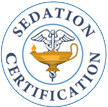Iowa Board of Nursing Review – Sept. 11, 2008
Reviewed by Sedation Certification – December 23, 2023
State Sedation Policy – None
Contact the Board of Nursing if you have any questions!
https://nursing.iowa.gov/practice/practice-frequently-asked-questions
Is it within the scope of practice of the RN to administer and monitor anesthetic medications for the purpose of operative, invasive and diagnostic procedures?
The Iowa Board of Nursing does not have a rule, regulation or position on the RN administering anesthetic medications for the purpose of operative, invasive and diagnostic procedures.
As with any task/function that the nurse carries out, it is important to remember the nurse must be educated and competent in the task/function. The nurse retains accountability for her/his actions.
https://nursing.iowa.gov/practice/ibon-position-statements-and-papers/joint-policy-statement-pain
Joint Policy Statement on Pain
Adopted by the Iowa Boards of Medicine 8/28/08, Nursing 9/11/08, Pharmacy 10/7/08, and Physician Assistant 1/21/09
This policy statement is not a legally binding opinion of the Boards, but is only intended to provide guidance to the public. The Board may make formal policy only through administrative rules, declaratory orders or contested case decisions.
The Iowa Boards of Medicine, Nursing, Pharmacy and Physician Assistants join together in a commitment to improve the pain management services for all Iowa residents.
Health care practitioners, i.e., medical doctors, osteopathic physicians, advanced practice nurses, registered nurses, licensed practical nurses, pharmacists and physician assistants care for patients regularly who have pain. Patients deserve to have their pain well managed, whether it’s acute or chronic, mild or severe. Health care practitioners should, within their legal scope of practice, attend to patients’ pain.
The goal of pain management is to treat each patient’s pain in relation to the patient’s overall health, including physical function and psychological, social and work-related factors. Although pain management is not an exact science, the Boards recognize that much can be done to treat pain more appropriately. Unmanaged or inappropriately treated pain impacts patients’ quality of life, reduces patients’ ability to be productive members of society and increases patients’ use of health care services.
To effectively assist patients in managing their pain, health care practitioners should, within their legal scope of practice:
- Routinely assess all patients for pain. All pain should be evaluated with an appropriate history and physical and with laboratory and diagnostic testing, if indicated.
- Draw on the expertise that other health care practitioners offer in treating patients’ pain and work cooperatively with them to balance between pain relief and sedation, keeping in mind each patient’s level of pain, overall health and need to attend to family and other responsibilities. Utilize non-pharmacological and pharmacological approaches to the treatment of pain and suffering.
- Regularly evaluate the effectiveness of the treatment plan and work together to alter the plan or seek consultation/referrals if the treatment is not providing optimal pain relief.
- Document the assessment, plan of care and response to care in a clear, consistent, thorough and accurate manner. Patients should be informed of the risks and benefits when controlled substances or highly abusable drugs are prescribed in the ambulatory care setting. Documentation should be sufficiently detailed so that other practitioners can understand the original practitioner’s findings and thought processes.
- Anticipate and effectively manage side effects of pain medication, e.g., nausea, constipation, fatigue, depression and anxiety.
- Become knowledgeable about effective pain management.
- Learn about addiction. Patients with addictions deserve to have their pain treated effectively. Patients in recovery from addiction who have pain should have their pain treated effectively while minimizing the recurrence of their addiction.
- Minimize the risk of diversion of drugs by using a pain management contract for chronic pain patients prescribed controlled substances and other abusable drugs.*
A licensed health care practitioner involved in the care of a patient in pain should not be at risk of disciplinary action from their respective licensing board for prescribing, dispensing or administering controlled substances, including opioid analgesics, for a legitimate medical purpose, based on accepted scientific knowledge, sound clinical judgment and adequate documentation.
*The Iowa Boards wish to note their reliance on the pain management statements of the New Mexico and Oregon Boards in preparing this statement.
